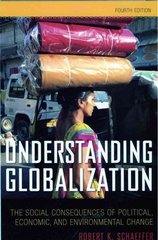Question
Question: Porter's Diamond deals with the competitive advantages of nations. Select two to three countries and make a simple comparative analysis of the four points
Question: Porter's Diamond deals with the competitive advantages of nations. Select two to three countries and make a simple comparative analysis of the four points of the diamond, as well as the recent roles of government in those nations. Conclude your discussion by exploring the associated competitive advantages that may accrue to foreign firms that choose to operate in each of those countries.
Reference:
INTERNATIONAL TRADE AND MOBILITY THEORY OPENING CASE: COSTA RICAN TRADE, FOREIGN INVESTMENT, AND ECONOMIC TRANSFORMATION (FOR READING ONLY) Costa Rica, a Central American country of barely 4 million people, has successfully transformed its primarily agricultural economy to one that includes strong technology and tourism sectors as well. Bordering both the Pacific Ocean and the Caribbean arm of the Atlantic, Costa Rica used international trade and factor mobility policies to help achieve its economic objectives. Although exports of coffee and bananas are still important, high-tech manufactured products (electronics, software, and medical devices) are now the backbone of Costa Rica's economy and export earnings. As in all countries, Costa Rica's policies continually evolved, but generally fall into four periods and categories: 1800s-1960: a liberal trade regime that promoted the exports of coffee and bananas 1960-1982: a more protectionist regime that promoted import substitution, i.e., a policy of developing domestic industries to manufacture goods and provide services that would otherwise be imported (although results were mixed, the processing of coffee and cotton seeds increased the value of Costa Rican exports, and considerable substitution occurred in the pharmaceutical industry) 1983-Early 1990s: a less protectionist regime that promoted the liberalization of imports, encouraged export promotion, and provided incentives to attract foreign capital and expertise Early 1990s-Present: a liberal trade regime that seeks the production of electronics, software, and medical devices via strategic trade policy, i.e., the identification and development of targeted domestic industries in order to improve their competitiveness at home and abroad
Question: Porter's Diamond deals with the competitive advantages of nations. Select two to three countries and make a simple comparative analysis of the four points of the diamond, as well as the recent roles of government in those nations. Conclude your discussion by exploring the associated competitive advantages that may accrue to foreign firms that choose to operate in each of those countries.
Reference:
INTERNATIONAL TRADE AND MOBILITY THEORY OPENING CASE: COSTA RICAN TRADE, FOREIGN INVESTMENT, AND ECONOMIC TRANSFORMATION (FOR READING ONLY) Costa Rica, a Central American country of barely 4 million people, has successfully transformed its primarily agricultural economy to one that includes strong technology and tourism sectors as well. Bordering both the Pacific Ocean and the Caribbean arm of the Atlantic, Costa Rica used international trade and factor mobility policies to help achieve its economic objectives. Although exports of coffee and bananas are still important, high-tech manufactured products (electronics, software, and medical devices) are now the backbone of Costa Rica's economy and export earnings. As in all countries, Costa Rica's policies continually evolved, but generally fall into four periods and categories: 1800s-1960: a liberal trade regime that promoted the exports of coffee and bananas 1960-1982: a more protectionist regime that promoted import substitution, i.e., a policy of developing domestic industries to manufacture goods and provide services that would otherwise be imported (although results were mixed, the processing of coffee and cotton seeds increased the value of Costa Rican exports, and considerable substitution occurred in the pharmaceutical industry) 1983-Early 1990s: a less protectionist regime that promoted the liberalization of imports, encouraged export promotion, and provided incentives to attract foreign capital and expertise Early 1990s-Present: a liberal trade regime that seeks the production of electronics, software, and medical devices via strategic trade policy, i.e., the identification and development of targeted domestic industries in order to improve their competitiveness at home and abroad
Step by Step Solution
There are 3 Steps involved in it
Step: 1

Get Instant Access to Expert-Tailored Solutions
See step-by-step solutions with expert insights and AI powered tools for academic success
Step: 2

Step: 3

Ace Your Homework with AI
Get the answers you need in no time with our AI-driven, step-by-step assistance
Get Started


